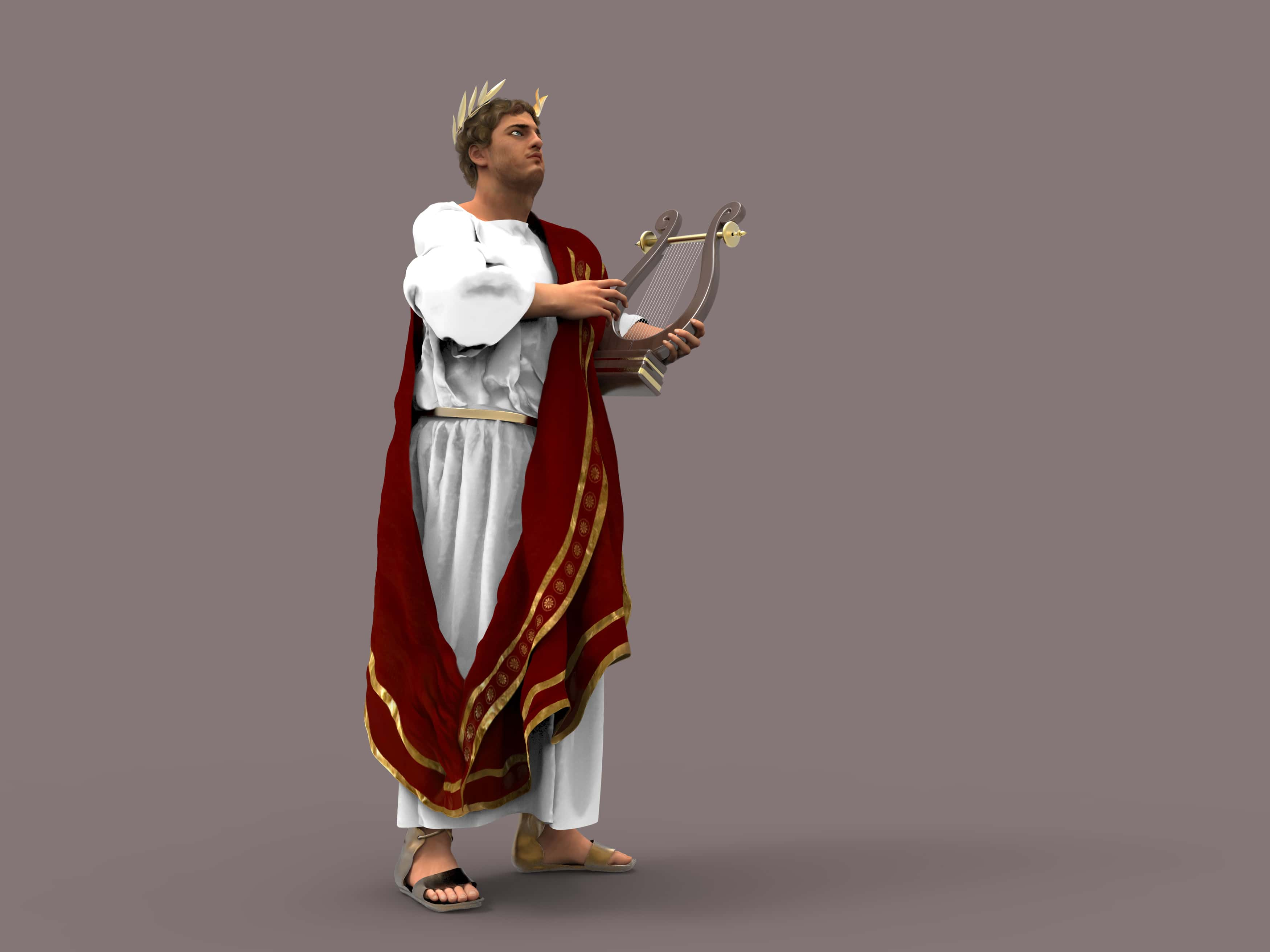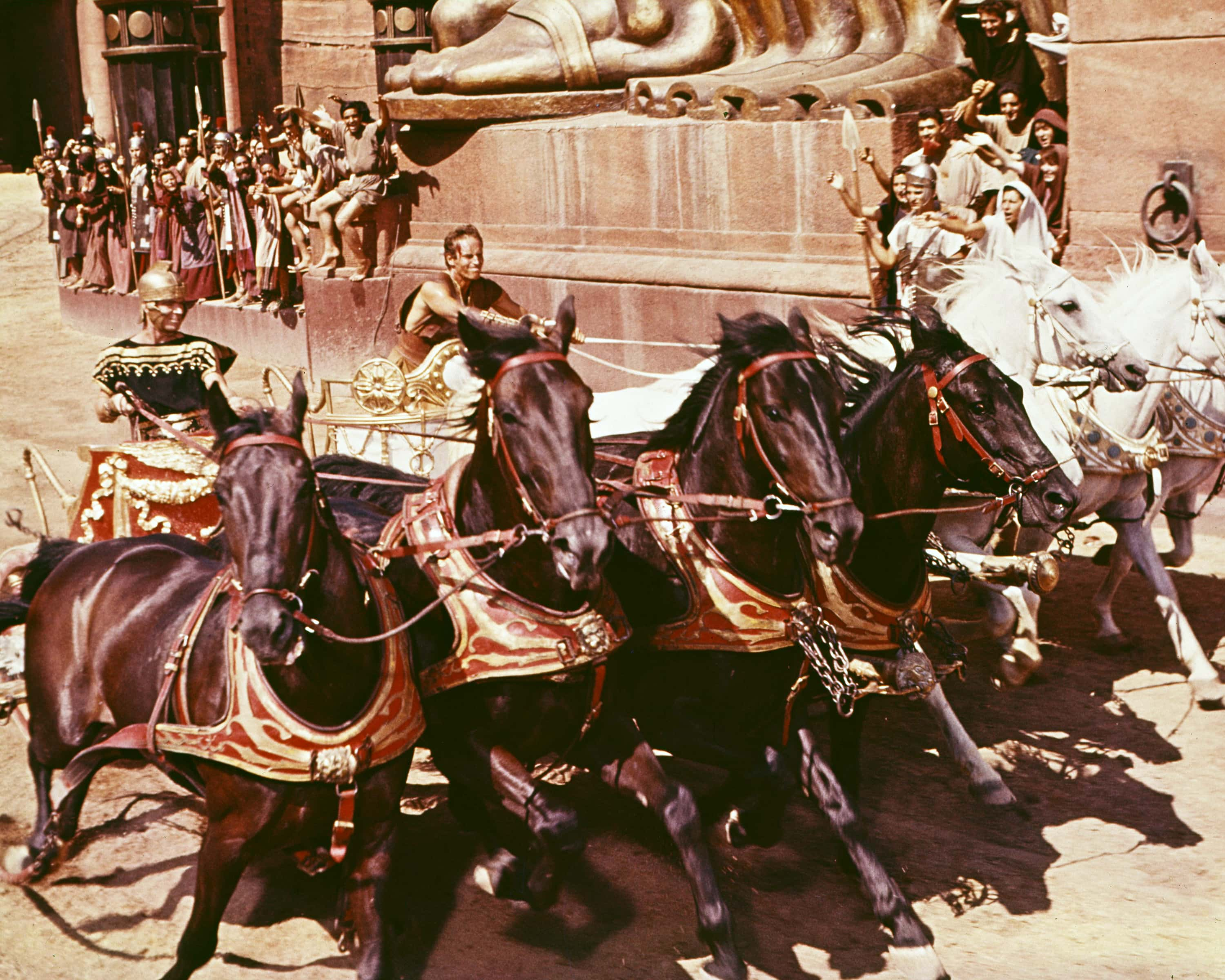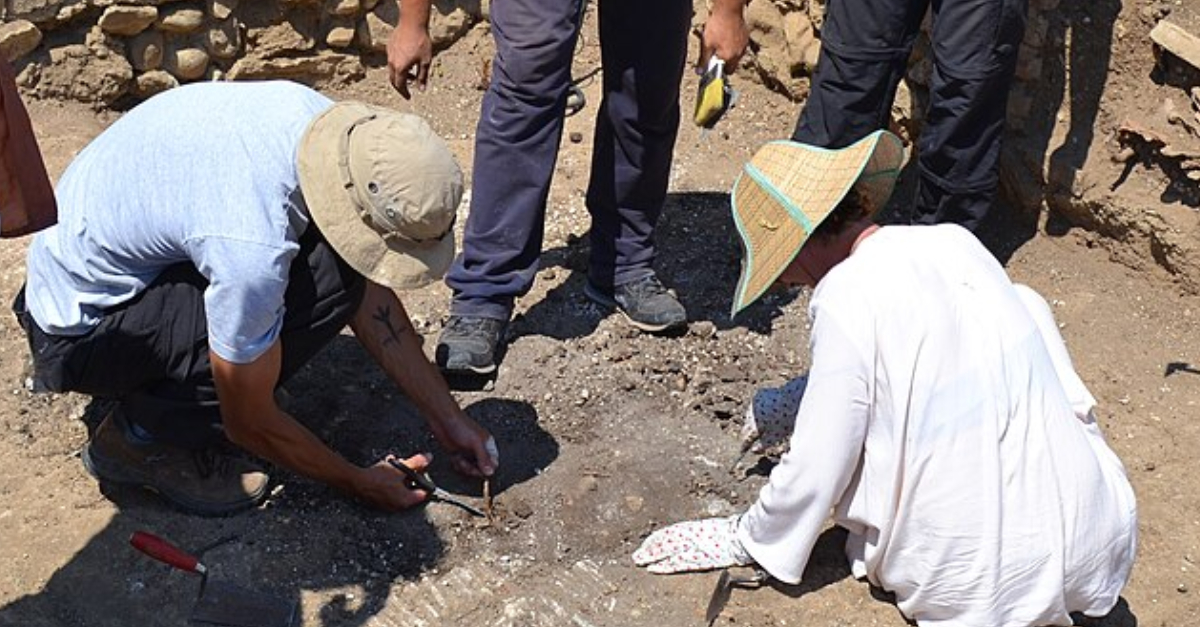"I think he knows what Rome is. Rome is the mob. Conjure magic for them and they'll be distracted. Take away their freedom and still they'll roar. The beating heart of Rome is not the marble of the Senate, it's the sand of the Coliseum. "He'll deliver their end—and they will adore him for it".—Gracchus, Gladiator (2000).
To put it simply, ancient Rome is probably the most epic civilization in human history. What started in the eighth century BC as a small town on the bank of the Tiber River in what is now central Italy became one of the most powerful empires the world has ever seen. It endured for over a millennium, brimming with numerous battles and armed expeditions. Throughout its existence, it extended to cover the entire continental Europe around the Mediterranean basin, the whole of Britain, and a vast portion of western Asia and northern Africa. Few other civilizations can boast that longevity or totality of influence, making it one of the most fascinating historical subjects to learn about.
46. Burn, Baby, Burn!
Nero (emperor from 54 AD-68 AD) is famous for singing and playing the fiddle while much of Rome burned to the ground during the Great Fire of Rome.
It was later speculated that this account was false, and that it was propaganda created by the next emperor. One key piece of evidence: the fiddle wasn't invented yet. The story was probably invented by subsequent rulers as propaganda, to suggest at the opulence and decadence of emperors like Nero.
Life tip: if you're going to spread lies about your enemies, make sure they don't entail activities that would be quite literally impossible. It diminishes credibility.
Then again, the image is pretty funny.
Roman Soldier: "My Emperor! The city is burning! What do we do????"
Nero: "Hmmmmmmmmm. Did I play you my new single yet?"

45. Bloodsport or Speed?
Despite what Hollywood movies may have led us to believe, gladiatorial fighting wasn’t the most popular form of entertainment—although it was likely still the most bloody and barbaric. Modern archaeologists estimate that the Colosseum could accommodate 50,000 people, which, for perspective, is just a bit less than the capacity of Yankee Stadium.
This means that the Colosseum was dwarfed by the Circus Maximus, where 250,000 Romans could gather to watch chariot racing. That's more than twice as large as the biggest soccer stadium in the world, Rungrado May Day Stadium in Pyongyang, North Korea. Perhaps one of the reasons why chariot races were attended in such large numbers is because it was one of the few sports where women were allowed to join the audience as spectators—guess that letting the other half of the population participate is a pretty easy way to double your ticket sales!
Although chariot racing was less bluntly violent than gladiatorial combat, it was still incredibly dangerous for both horses and riders. The easiest way to get rid of opponents was, of course, to drive them into the median, creating a spectacular accident. As riders tied the reins around their waists, when anything at all went wrong, they would be dragged along by the horses until they could free themselves—that is, if they could free themselves.
44. Live Long and Prosper
As was the case in many ancient civilizations, most people weren't exactly just waiting out the years to retire at 65. Life expectancy in ancient Rome was only 20 to 30 years—but not everyone lived to a meager age. The average life expectancy during that period was skewed due to the high number of women who didn't survive childbirth and the elevated infant mortality rate. If a Roman made it to maturity, they were likely to live as long as people in the modern Western world.
43. Size Matters
It may be one of the most well known, but the Roman Empire was not actually the largest empire in history. Concentrated as it was in a relatively small area (okay, maybe it doesn't look that small, but compared to most other continents, Europe is kind of eensy), at its peak, the Roman Empire comprised of five million square kilometers (1.93 million square miles), whereas the British Empire covered 35.5 million square kilometers (13.71 million square miles). That puts it at #25 on the list if we're measuring by land size.
If we're going by population size, the largest empire was the Achaemenid Empire, AKA the Persian Empire. In 480BC, at its peak, it accounted for 44% of the world's population, whereas Rome only ever got to around 20%. At its peak, the Roman Empire had between 50 and 90 million inhabitants. That's nothing to sneeze at!
42. Can’t We All Just Get Along?
The wars between the Romans and the Persians lasted about 721 years. This constitutes the longest conflict in human history. Though it wasn't barbaric frontline combat all the time—the boundary between the two sides was largely stable, and it reflected more of a drawn-out deadlock than a series of escalating encounters.
41. Cover Up
After the wedding night, a modest Roman wife wasn't supposed to allow her husband to see her without clothes again. Hence, it may not be surprising that the philosophers who contended that a man should only be intimate with his wife garnered few followers. Maybe being a Vestal Virgin wasn't so bad after all...
40. Purity Certified
During the 7th century BC, ancient Roman "Vestal Virgins" were required to keep their hymens intact as proof of virginity for 30 years. The Vestal Virgins were an order of priestesses who worshipped the goddess Vesta, and they were very important figures in the Roman religion. They tended to the sacred fire which wasn't allowed to go out, and which was thought to give ancient Rome life and keep it safe. Their virginity was tied into this great responsibility, hence the 30-year vow. However, as a downside, Vestal Virgins who indulged in intimate conduct were punished by being buried alive. Is this the origin of the '70s horror movies stereotype where all sexually active teens meet their demise and only the virgin survives?

39. A Little Bit of a Flooding For a Lot of Fun
In 86 AD, the Colosseum was filled in with water to stage a full naval battle. Cassius Dio, a Roman writer, stated that "Titus suddenly filled this same theatre with water and brought in horses and bulls and some other domesticated animals that had been taught to behave in the liquid element just as on land. He also brought in people on ships, who engaged in a sea-fight there, impersonating the Corcyreans and Corinthians". It sounds way more high budget and impressive than any historical reenactment I've ever seen!
38. Poop Matters
The inhabitants of ancient Rome had a sewer goddess (Cloacina), a toilet god (Crepitus, also the god of flatulence), and a god of excrement (Stercutius). The gods were often believed to visit the latrine in great amounts and excrement was seen as sustenance for those who have passed. Looks like the ancient Romans had a surprisingly progressive view of the importance of gut health! Good on 'em!

37. Gotta Get Dirty to Get Clean
The ancient Romans did NOT have Tide or Crest, in case you were wondering. What was used to wash clothing in ancient Rome? Urine, of course. The Romans also used it to whiten their teeth. I'll pass, thanks.
36. Oxymorons
Sticks and stones may break my bones, but words will never hurt me—especially if they're used wrong. Early Christians were actually called "atheists" by Romans because they didn't pay tribute to the pagan gods. Members of the early church were also considered "cannibals" because they "ate" of the body of Christ and "drank" his blood. When you put it that way, I can see where they were coming from. It got to a point where they actually had to invite Roman authorities to communion so that they could see they weren’t actually practicing cannibalism.
35. Arsenic For Dinner
Emperors poisoned themselves a little bit every day. From the end of the first century AD, Roman emperors had adopted the daily habit of taking a small amount of every known poison in an attempt to gain immunity, a practice called “Mithridatism". Although effective against some types of poisons, it doesn’t work against all of them, and, depending on the toxin, the practice can lead to the lethal accumulation of a poison in the body. Turns out, it’s much easier just to label things "poison" and tell people not to eat them.
34. Salt and Blood
If you're a numismatist—that is, a coin collector—you already know that the ancient Romans had a currency system with coins, many of which have been preserved and can be seen in museums and at coin auctions today! But one form of currency whose value has certainly dissolved over time? That would be salt. In fact, the ancient Greeks and Romans often bought slaves with salt.
Salt not only served to flavor and preserve food but also made a good antiseptic, which is why the Roman word for these salubrious crystals (“sal”) is a first cousin to Salus, the goddess of health.
So it's nice that salt was valuable and all, but you have to think that being purchased for salt would still be a hit to the self-esteem. The equivalent today would be someone trading you in exchange for a bunch of avocados. I mean, yes they're healthy and delicious, but...

33. Row Your Own Darn Boat
Roman warships were not rowed by slaves. In almost all movie portrayals of Roman warships, slaves row the galleys, often under that watchful eye of whip-holding masters. In truth, it was believed that only free Roman citizens had a duty to fight for the state. This excluded the use of slaves as rowers. In the handful of exceptional times when slaves were admitted to the armed forces, they were either freed before enlistment or promised manumission if they fought well. It's literally the least the Romans could've done...

32. The More the Merrier
Unsurprisingly, considering how ancient Romans had multiple gods that had to do with sewers and poop, toilet etiquette was also pretty important to them as well.
Ancient Romans used a sponge on a stick called a “spongia” to clean themselves after pooping. Public facilities had a long marble bench with holes on top—for the obvious thing—and holes at the front, to hold the sponge-sticks. There were no doors or dividing walls. You sat right next to your friend and did what you had to do. Once you had done your business, you would rinse the spongia in the channel of running water at your feet and – without standing up or revealing anything –push the spongia through the hole at the front, give your bottom a solid wipe, rinse off the spongia… and leave it in a basin for the next person to use. Sharing is caring, people!

31. Employee of the Month
In the latter years of the Empire, Romans avoided being cruel to slaves. And, just like modern employers, they used bonuses to improve productivity. Of course, many slaves were still branded and harshly punished if they tried to escape, so, umm, win some, lose some?

30. Did He Mic Drop As He Left?
Cincinnati is named after Cincinnatus, a dictator of the early Roman Republic who lived from 519BC to 430BC. He is known for serving as dictator twice for very short periods. He'd save Rome from crisis, and then retire to his farm. Get in, get the job done, get out. No wonder he's revered.

29. Extraordinary Structures
Amazingly, two Roman dams built in Spain are still in use after 1,900 years. These dams are noteworthy for their extraordinary height, which remained unsurpassed anywhere in the world until the Late Middle Ages. Guess I could use a lesson from the Romans—the last piece of Ikea furniture I built lasted four days.

Proserpina Dam, Spain.
28. Ain't No Party Like a Roman Party
You might think that the world of entertainment has peaked in the 21st-century. Regardless of how you feel about the quality, it's hard to argue that the sheer volume of things that we have to entertain ourselves is at its pinnacle. You might even be sitting there with your Netflix subscription, and several thousand games on your iPhone, thinking, "This is as good as things could ever possibly get".
But you'd be wrong.
Because as good as the options might be today, you'll never get the experience of a real Roman-style party.
After all, in the 1st century AD, the Romans had polar bears fight seals in amphitheaters they flooded with water. That is next level.

27. Lady Liberty
The Statue of Liberty was inspired by the Roman goddess Libertas, who was the goddess of, you guessed it, the harvest! Just kidding. She was the goddess of liberty, duh.
They may have put her all over their coins, but they never had a statue of her that was as big as ours, so... take that, Romans.

26. Secret Recipe
After the fall of the Roman Empire, the technology to make concrete was lost for 1,000 years. In fact, Ancient Roman concrete has withstood attacks by elements for over 2,000 years, which is considerably longer than the lifetime of most modern concrete structures. I'd rather look at the Colosseum than an ugly concrete high rise anyway.

25. Which Floor is the Starbucks on?
Ancient Rome had a 4-story-tall shopping mall called “Trajan's Market” with 150 shops and offices. It was built between 100 and 110AD, and its ruins can still be visited today.

Trajan's Market.
24. Sounds Reasonable
If ancient Rome's Colosseum was built today, it would cost about $380 million. Does that include the land it's built on? That's gotta be pretty prime real estate nowadays.

23. The Penalty for Patricide
In Ancient Rome, one who committed patricide was subject to a severe form of capital punishment. This involved being enclosed in a pouch with a monkey, a viper, a dog, and a rooster. The punishment (called “poena cullei”) varied slightly depending on the ruling emperor. It seems some rulers preferred more snakes and others more dogs. To each their own! Regardless of the emperor, a fair fight wasn’t an option: the person was first beaten with virgis sanguinis ("blood-colored rods”) and his head was covered in a bag made of a wolf's hide.
22. Pee Pee Potpourri
In ancient Rome, women would drink turpentine to make their urine smell sweet, like roses. Well, if you’re going to brush your teeth with it later anyway…

21. Funny Fish
The Salema porgy is a species of fish that can cause hallucinations when eaten. In ancient Rome, it was consumed as a recreational drug. In fact, Salema porgies are regularly eaten without their consumers experiencing hallucinogenic effects, but in 2006, two men were hospitalized in the south of France after consuming them, one of whom was 90 years old. They both claimed to fall “ill” and experience auditory hallucinations along with lucid nightmares for several nights, until the “symptoms” finally and mysteriously abated.

20. Long Days, Long Hours
Very few Roman hours lasted sixty minutes. Like us, the Romans divided the day into 24 hours. But unlike us, their hours varied in length because the Romans ensured there were always 12 hours of daylight and 12 hours of darkness. Therefore, a daylight hour in high summer was considerably longer than one in midwinter. As long as they didn't have to deal with Daylight Savings Time, it doesn't sound so bad!
Circular diagrams showing the division of the day and of the week
19. Who You Calling Ancient?
We live closer to the peak of the Roman Empire than the people living at that time did to the construction of the Pyramids of Giza. The Pyramids were built from 2550 to 2490 BC, and the height of the Roman Empire is considered to be 117AD. That's 2,607 years apart.

18. Yummy
Flamingo tongues were considered a delicacy in ancient Rome. Proof positive that foodies have always gone for the weirdest stuff.

17. Ancient Botulism
In 2012, divers discovered a 2,000-year-old Roman shipwreck that was so well preserved that even the food was intact in its storage jars. Were there any flamingo tongues left?

16. Just Call Him Emperor
Julius Caesar was pronounced 'YOO-lee-us KYE-sahr' in ancient Rome. Can you believe we've all been pronouncing it wrong this whole time? How embarrassing.

15. Ancient AC
Ancient Romans ran cold aqueduct water in pipes through their houses in an early form of air conditioning. These aqueducts also supplied water for public baths, latrines, fountains, and private households. Wastewater was removed by the sewage systems and released into nearby bodies of water, keeping the towns clean. No wonder Mario the Plumber was Italian.

Section of lead water pipe, Roman, 100 BC-200 AD
14. Black Widower
Nero, the Roman Emperor, married a man named Sporus, a freedman who took the role of the bride. While it may be tempting to give Nero props for his forward-thinking stance on sexuality, it’s also important to remember his darker side. Nero had Sporus castrated and made him wear robes like an empress.
If that wasn't grim enough for you, during his rule, he brutally ended the lives of his own mother, Agrippina the Younger, his first wife, Octavia, and allegedly, his second wife, Poppaea Sabina. Nero’s horrific deeds are so unimaginably bizarre that some religious scholars believe he is the biblically prophesized Antichrist. There also was that incident with the Great Fire of Rome that we’ll get to later…

13. Owen Wilson for Emperor
Based on the records of Caligula and Nero, the ancient Romans really had some subpar standards when it came to who they thought were good leaders.
Regardless, in ancient Rome, it was considered a sign of leadership to have a crooked nose.
That's right, in some alternate reality, Owen Wilson is a really, really, really good Roman Emperor.

Owen is a great-looking dude, and his nose adds character. Leadership, too, apparently.
12. Too Costly to Perish
In ancient Rome, the act of taking one's own life was initially socially acceptable, but later it was considered an offense against the state due to its economic ramifications.
Imagine being prevented from harming yourself, only to be informed that it wasn't an issue because, for instance, someone would miss you or something. No, they stopped you because it would be bad for the economy. That's not exactly confidence inspiring.

11. Take That, Ronaldo!
Roman charioteers earned more than even the best-paid footballers and international sports stars of today, according to academic research. One charioteer named Gaius Appuleius Diocles amassed a fortune equivalent to $15 billion USD today.

10. The Lost Legion
Inhabitants of the Chinese town of Liqian have blond hair and white skin. Historians have speculated they are the descendants of a lost Roman settlement. The most common theory is that Liquian features are linked to the legend of the missing army of Roman general Marcus Crassus. Primarily, the Parthians devastated most of the Roman combatants Crassus had sent into the fray. 10,000 Romans survived and were captured. They were forced to fight for various rulers, and, as the theory goes, they eventually settled in China.
9. Seems Counterintuitive
In 117 AD, Emperor Hadrian categorized attempts at self-harm as a form of desertion. Given they were amid a 721-year conflict, they needed all the personnel prepared for combat that they could gather, presumably. But that's where the logic ends. So, were the individuals from the troop caught in self-harm acts incarcerated or reassigned to another squad? No, it was considered a capital offence. This suggests that individuals who attempted self-harm and couldn't succeed, eventually lost their lives anyway.
8. Celebs in Cages
Contrary to movies and TV, Roman gladiators seldom engaged in fatal battles or fought against animals, and were considered celebrities of their time. That’s not to say it was easy being a gladiator. Gladiators did perish in combat, many were slaves, and they lived in conditions harsh enough to inspire gladiator rebellions, at least in the case of Spartacus. Yup, that guy from that movie you had to watch over the course of like four history classes.
7. Hecklers Beware
One would imagine that when attending a gladiatorial battle at the Colosseum would be a pretty loud affair, with lots of cheering coming from the stands. Even in the rowdiest crowds there's usually one or two bad eggs who spoil it for the whole bunch, and ancient Rome was no exception—but in one case, the punishment was unduly harsh. Emperor Domitian was notoriously sadistic (hey, when you're notoriously sadistic among Roman Emperors, that's saying something) and he apparently did not take kindly to hecklers. After a man yelled at one of his favorite gladiators, he had him dragged to the center of the stadium and thrown to wild dogs. who promptly did their jobs and completely eviscerated him.
6. What Did You Expect From Attila the Barbarian?
According to the narrative, Pope Leo I personally approached the renowned barbarian leader, Attila, pleading with him not to devastate the city of Rome. Reportedly, Attila was impressed by the Pope’s bravery. Impressed or not, Attila was the scourge of the Eastern part of the Roman Empire. In 435 AD, he extracted a winning deal with the Eastern Roman Emperor Theodosius II. In exchange for peace, the Romans would remit to him an annual tribute of 700 pounds of gold. A few years later Attila asserted that the Romans had not kept up their end of the bargain. He launched vicious attacks through Eastern Roman territories, forcing a hike in the fee to 2100 pounds of gold per year. Not cool, Attila.

5. 100 Uses For Gladiator Fluids
Somehow, even though ancient Romans had scores of gods to worship, they also found time to venerate the gladiators whose spectacles they would watch at the Colosseum. Like ancient Beliebers or Little Monsters, Roman women took their fandom very seriously: they were known to wear the sweat of gladiators. Wild, right? Well, it had a purpose. It was said to improve their beauty and complexion. Romans also used to drink gladiator blood because they thought that the blood of these strong and fierce beings had the power to cure epilepsy. Waste not, want not!
4. Undercover Boss, Ancient Rome Edition
If you were an ancient Roman with a penchant for letting loose, the event you looked forward to all year was a festival called the "Saturnalia," held in honor of, you guessed it, the Roman god Saturn. It was an all-encompassing six-day mega-party, where all members of Roman society would have a chance to participate in a variety of activities, including feasts, exchanges of gifts, gambling, parties, and an overall atmosphere of celebration that was generally contrary to how most Romans would live day-to-day. In fact, the normal social order was suspended to the point where slaves would be treated to a banquet of the kind usually enjoyed by their masters.
And if you think that's wild, another essential part of the Saturnalia? Well, according to some, it was human sacrifice. In truth, it was more of a ceremonial tribute to the god Saturn, giving gladiators who had met their end in the arena. Christian critics of Roman society were easy to characterize the practice as scarier and more barbaric than it was (by modern standards, it's still pretty creepy in the first place anyway).
 Fototeca Storica Nazionale, Gettyimages
Fototeca Storica Nazionale, Gettyimages
3. An Emperor's Best Friend
One of the most notable (and notorious) Roman emperors was Caligula, despite his short reign (he was taken out by officers in the Praetorian Guard). You may remember him as the emperor who made his horse a senator. Caligula is also accused of engaging in illicit relationships with his sisters, feeding prisoners to wild beasts, and having conversations with the moon. He must've fit in really well at the Saturnalia.
An anecdote that shows just how intimidating he was? Once at a dinner party, Caligula reportedly burst into raucous laughter. When asked to explain why, he replied, “I’ve just thought that I’ve only to give the word and you’ll all have your throats cut". Hilarious, right?
The next time you complain about a modern politician, take a moment to say silent thanks that at the very least he doesn't have a horse he wants to nominate for public office. Things can always be a little bit worse (and weirder).

Caligula's horse which he made a God
2. Truly Ruthless
King Herod the Great is definitely not remembered as much for his greatness as for being the evil Roman King who wanted to slaughter the baby Jesus. Herod was a power-hungry schemer who exploited the political situation in Rome to become ruler, and he perceived Jesus as a challenge to his authority. Luckily for Jesus, Mary, and Joseph were warned about this plot in advance, and they took the baby and fled to Egypt. Herod was so ticked off at being foiled that he ordered the slaughter of all boys under two in the Bethlehem area.
After accusing his wife of adultery and having her executed, King Herod had her body preserved in honey and continued to perform disturbing acts with it for years afterward.
After ruling for 37 years, he endured a horrifically painful end, suffering from a disease that decimated his body and inflicted him with worms. Kind of poetic, really.
1. A Bit Extreme, Don’t You Think?
Remember how we mentioned that gladiators were really considered hunky celebs in their day? Well, Marcus Aurelius, a Roman emperor largely known for his philosophy and humanitarianism, faced an interesting dilemma in this arena. Get it? Arena? Like where the gladiators fought?
His wife Faustina became aroused over one combatant and confessed her passion to her husband. He asked the Chaldean soothsayers what to do about the problem, and they came up with a truly disturbing solution. They proposed that Faustina should be commanded to undress and engage in an intimate act with the specified gladiator, who would then meet his demise while in close proximity with her. Afterward, she was obliged to bathe in his blood, do a quick cleanup, and then make love to her husband Marcus. They allegedly went through with it all. You have no chill, Chaldean soothsayers.

Marcus Aurelius and Faustina
Sources: 1, 2, 3, Reddit, 5, 6, 7. . 9. 10, 11, 12, 13, 14, 15, 16, 17, 18, 19, 20, 21, 22, 23, 24, 25, 26, 27, 28, 29, 30, 31, 32, 33, 34
























